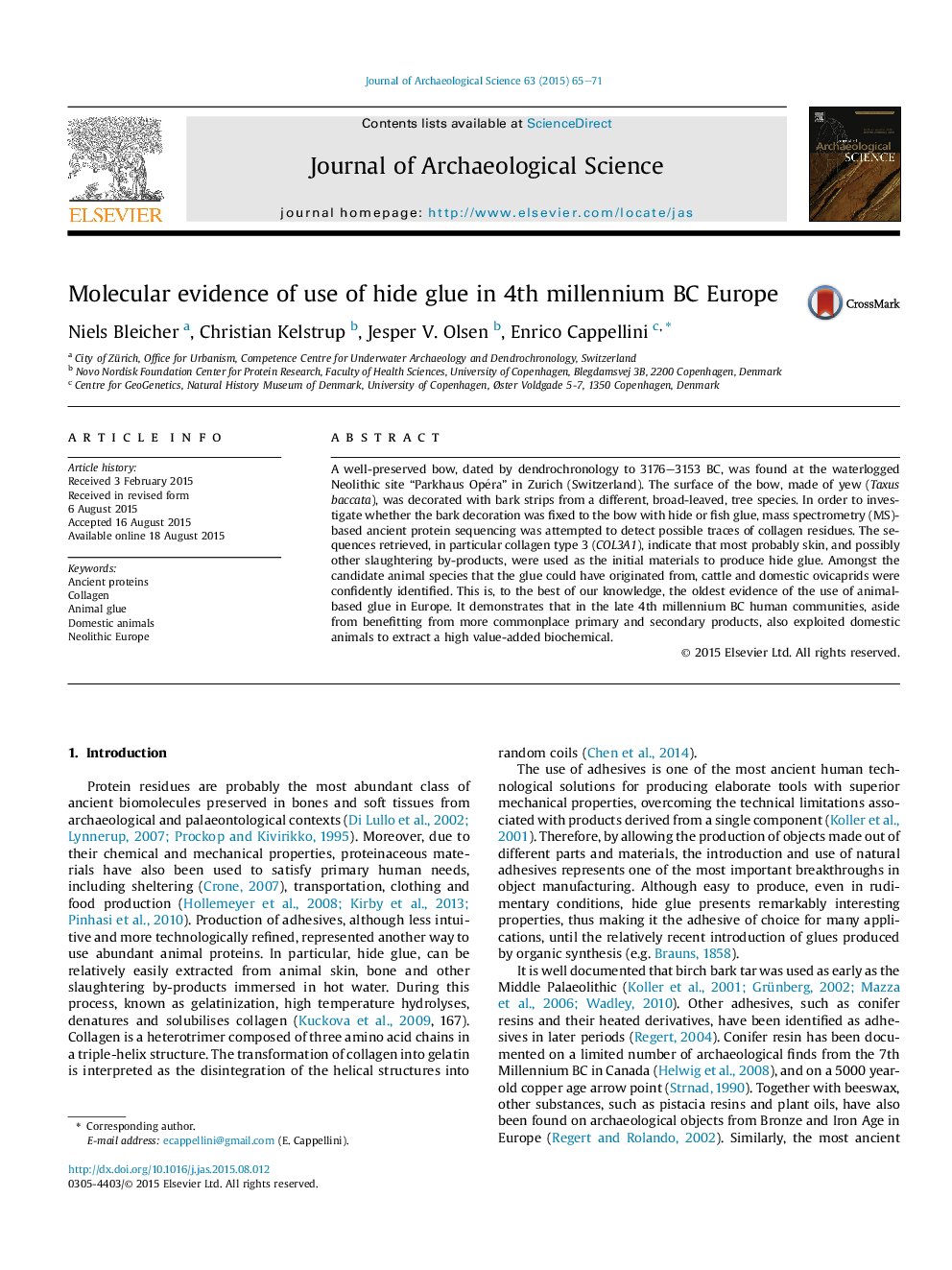| Article ID | Journal | Published Year | Pages | File Type |
|---|---|---|---|---|
| 7441617 | Journal of Archaeological Science | 2015 | 7 Pages |
Abstract
A well-preserved bow, dated by dendrochronology to 3176-3153 BC, was found at the waterlogged Neolithic site “Parkhaus Opéra” in Zurich (Switzerland). The surface of the bow, made of yew (Taxus baccata), was decorated with bark strips from a different, broad-leaved, tree species. In order to investigate whether the bark decoration was fixed to the bow with hide or fish glue, mass spectrometry (MS)-based ancient protein sequencing was attempted to detect possible traces of collagen residues. The sequences retrieved, in particular collagen type 3 (COL3A1), indicate that most probably skin, and possibly other slaughtering by-products, were used as the initial materials to produce hide glue. Amongst the candidate animal species that the glue could have originated from, cattle and domestic ovicaprids were confidently identified. This is, to the best of our knowledge, the oldest evidence of the use of animal-based glue in Europe. It demonstrates that in the late 4th millennium BC human communities, aside from benefitting from more commonplace primary and secondary products, also exploited domestic animals to extract a high value-added biochemical.
Related Topics
Physical Sciences and Engineering
Materials Science
Materials Science (General)
Authors
Niels Bleicher, Christian Kelstrup, Jesper V. Olsen, Enrico Cappellini,
